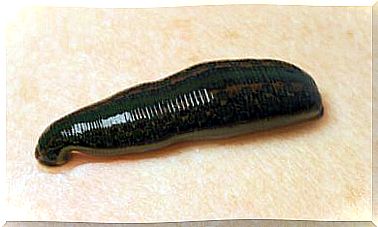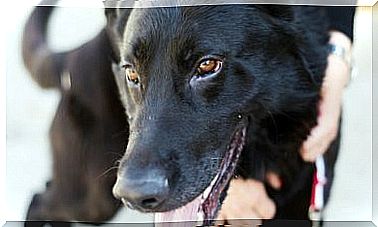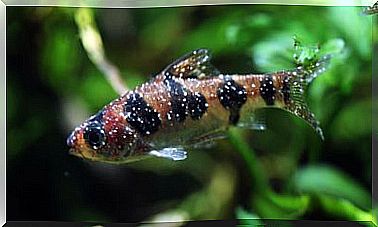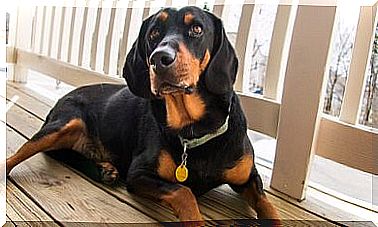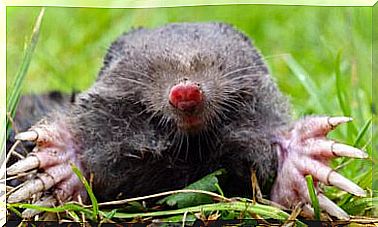Giraffe: Characteristics, Behavior And Habitat
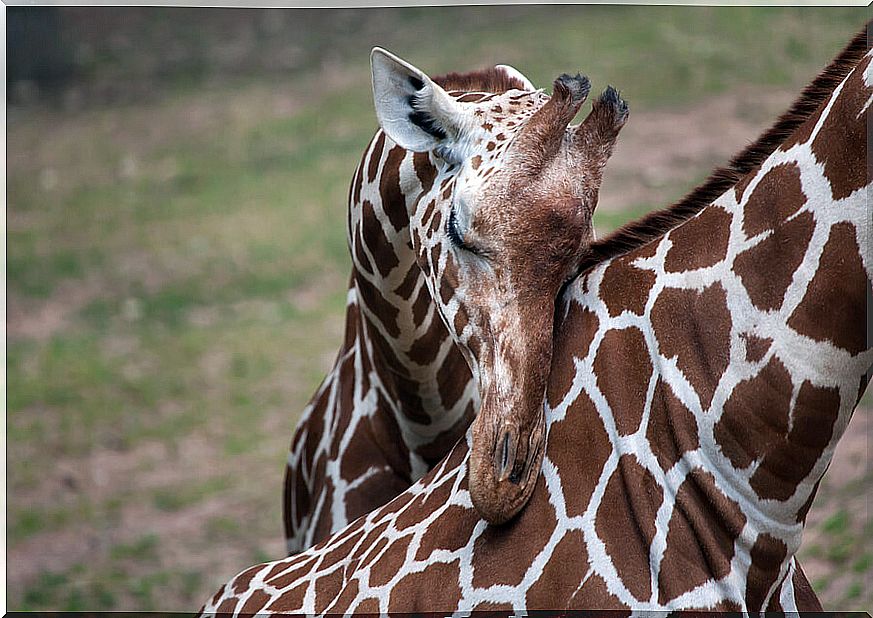
The giraffe is the tallest mammal on the entire planet. The length of its neck and legs is very striking from the first time it is seen, hence it is one of the animals that generates the most curiosity. And, like the zebra, it has a very attractive skin that has undoubtedly inspired many designers to imitate its various patterns.
It is a herbivorous animal whose neck can reach up to two meters in length. Obviously, this is the part of your body that is the longest. However, the rest of its characteristics can be equally curious. Here are some of the most outstanding ones.
Giraffe characteristics
Weight and length
The long neck of the giraffe serves to feed on the leaves of the trees and clean themselves. However, this is not the only tool they have, as they also have a very long tongue. It can measure up to 50-53 centimeters long and has a color between purple and black, and sometimes it can present purple or blue tones. With their tongue they “hug” the food and bring it to their mouth.
A giraffe’s leg is longer than the height of many human adults, reaching 180 centimeters. And even though this may seem like a great advantage in terms of escaping potential predators, the giraffe can only walk and gallop at a speed of between 50 and 60 kilometers per hour.
With regard to its dimensions and weight, it must be said that its body measures between 3.8 and 4.7 meters; to which must be added the tail, which ranges between 78 and 100 centimeters. Males are taller than females and usually weigh between 1192-1600 kg. For their part, females usually weigh about 750-825 kg.

Curiosities
On their head, they have a pair of “horns” called osicones. It is a kind of cartilage that is usually much more marked in males than in females. Another curious fact about giraffes is that males can give off a much stronger smell than that of females. This scent is believed to help them attract a mate during the breeding season.
The coat is short and has brown tones, mottled with spots of a color darker than its background. The pattern of their spots is defined when they are calves and, later, they mate according to the similarity of that pattern. As for the mane, it is quite short and looks more like a crest.
The 4 species of Giraffa
- Camelopardalis.
- Reticulata.
- Tippelskirchi.
- Giraffa.
Unfortunately, West African giraffes, that is, those belonging to the Giraffa camelopardalis species , are in danger of extinction. They stand out because their spots have a redder tone and a background, generally very light. The contrast they offer to the naked eye is really impressive.
The main reason why the western giraffe is in danger of extinction is the destruction of its habitat. However, there are also other causes such as: poaching (mainly as a hobby and to use their skin in various ways) and civil unrest in different regions.
Habitat and behavior
Giraffes inhabit African grasslands, savannas, forests and grasslands. They generally live in herds of up to 20, and not less than 6. These herds are mostly made up of females and a few young males. Now, it should be noted that families change by the hour. Although the mother stays with her calf for a whole year, after this time has elapsed, the rotation begins.

The males fight each other to be the leader by necking (hitting the opponent with the neck until they give up). In addition, they emit sounds similar to the bellowing of cows. In this way, they can warn each other in case a predator approaches. They are also used for mothers to identify their young if they have been lost.
These are generally shy animals that try to avoid confrontations. But if they are cornered or threatened, or if they see their young in danger, they kick that can be fatal given the weight and strength of their limbs.

